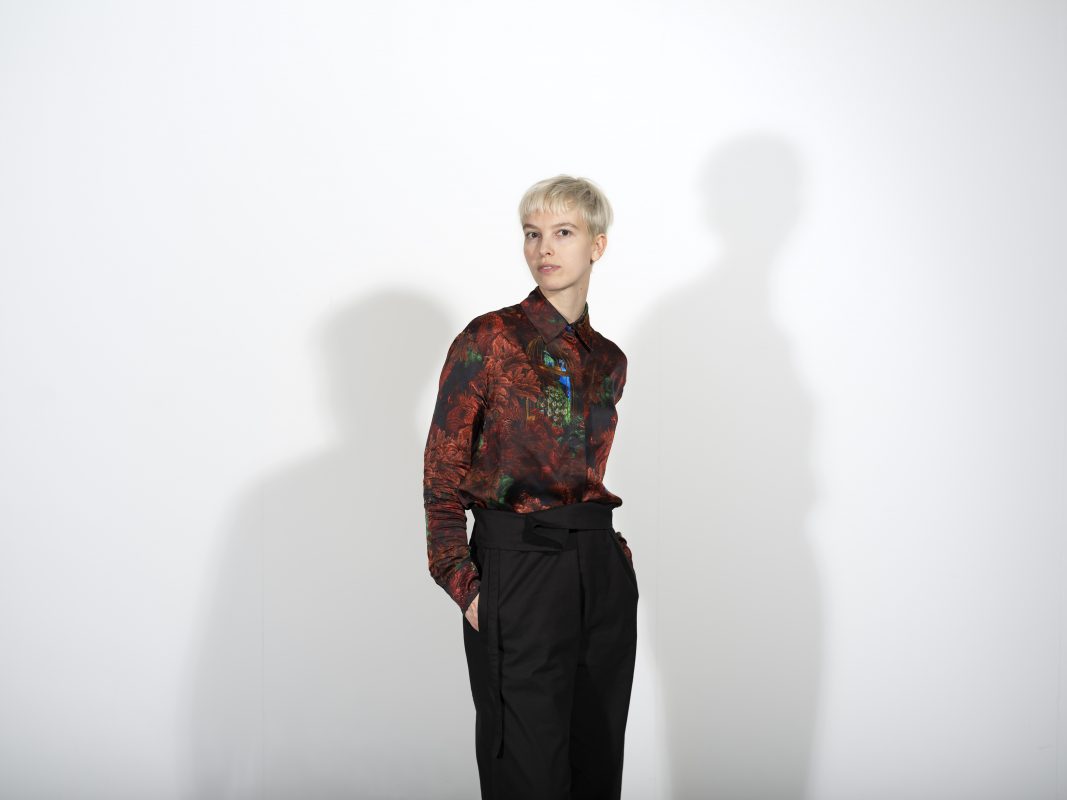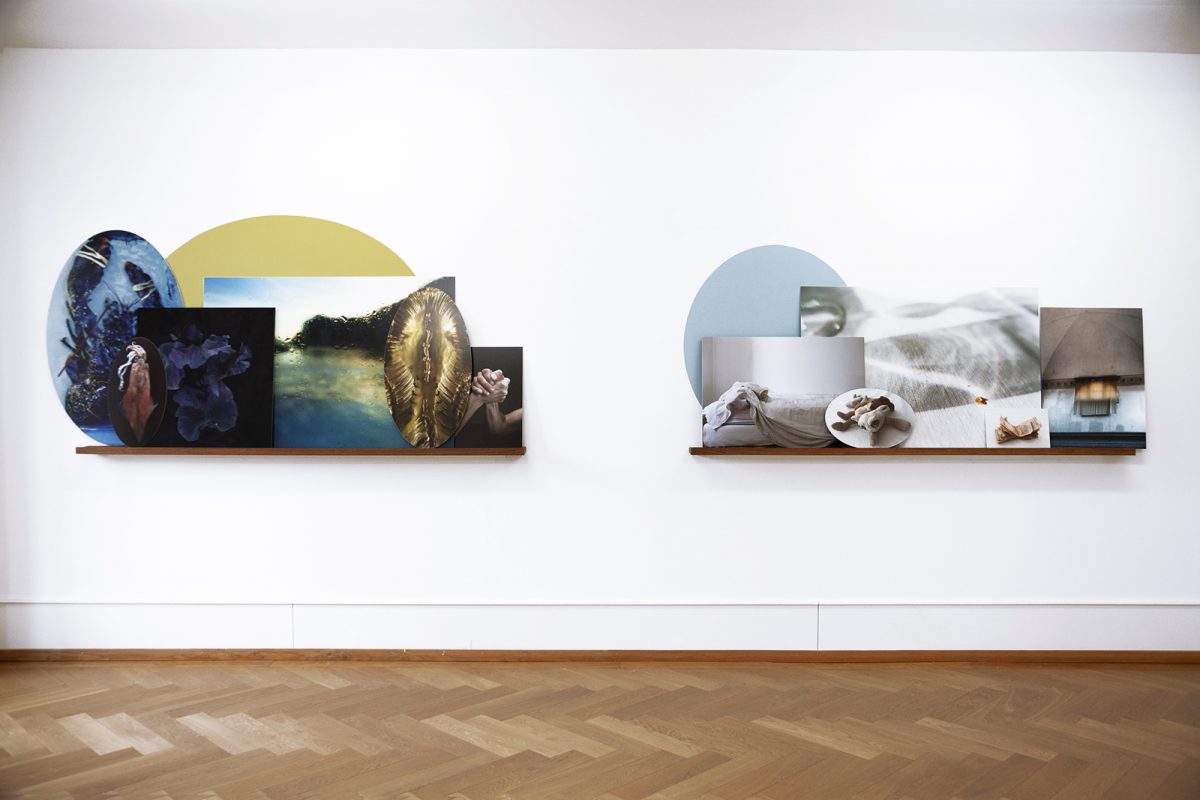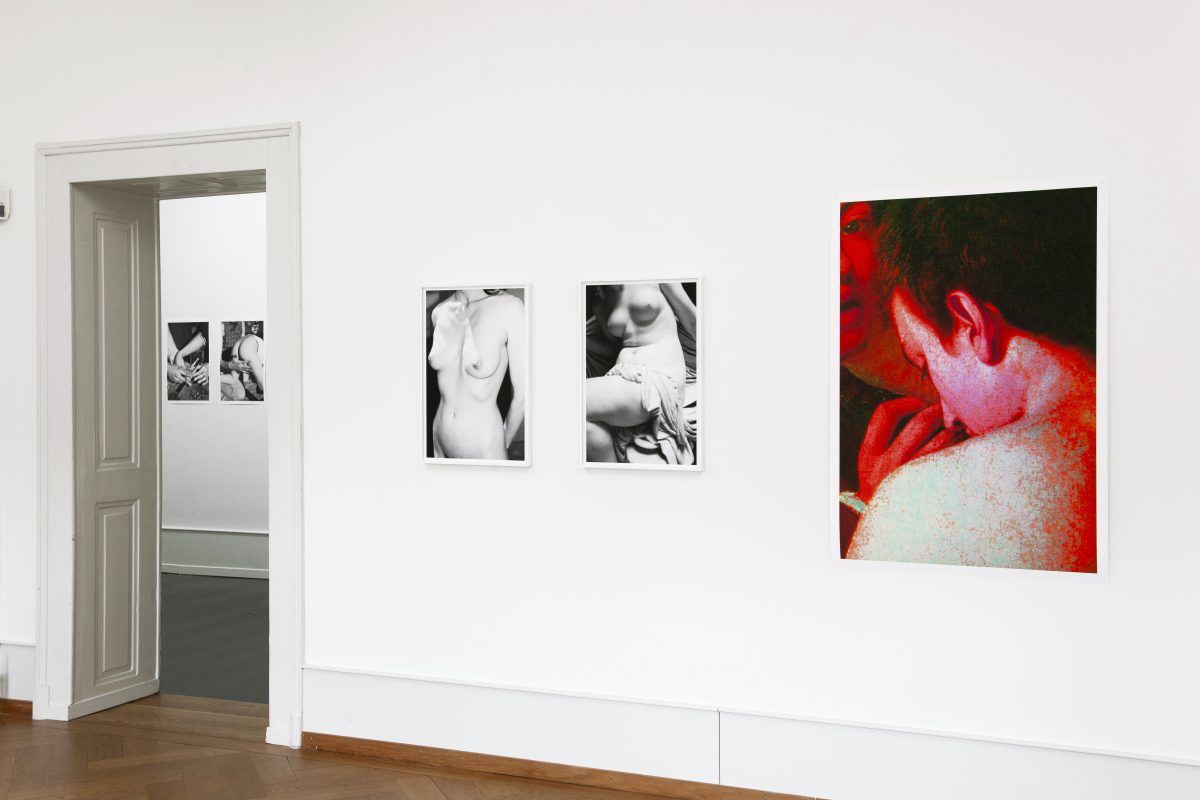Curator Conversations #3
Danaé Panchaud
Danaé Panchaud is a curator and lecturer specialising in photography. Since 2018 Panchaud has been Director / Curator of the Photoforum Pasquart in Biel, Switzerland, one of the principle Swiss institutions dedicated to photography. Her programme focuses mainly on emerging contemporary photography practices as well as the social and vernacular uses of photography.
She trained in photography at the Vevey School of Photography before completing BA Visual Arts with a specialisation in Critical Curatorial and Cybermedia (CCC programme) at Geneva School of Art and Design (HEAD) in 2008. In 2017 she obtained her MA Museum Cultures at Birkbeck, University of London. She has held positions in several Swiss institutions in the fields of contemporary art, design and science, including the Centre d’Art Contemporain Genève, where she was a research associate from 2007-12, the Gallery SAKS in Geneva, and the Mudac in Lausanne, where she was in charge of the public relations. She has curated exhibitions for several Swiss museums and galleries, including the Fondation Verdan in Lausanne, the Fonds d’art contemporain de la Ville de Genève, standard-deluxe in Lausanne, the Photoforum Pasquart in Biel, the CEPV/Festival Images in Vevey and the mudac in Lausanne. She was a lecturer at the Vevey School of Photography from 2014-18.
What is it that attracts you to the exhibition form?
To me it’s a medium that offers unique possibilities to connect different elements; to craft a narrative with depth, nuance and complexity, by using and often combining different visual and narrative strategies.
I’m also interested in the fact that it engages the body of the spectator, who chooses the distance they want to watch things from, their duration of looking at a particular image, installation or object. I think that it gives the spectator a form of agency, beyond the binaries of looking/not looking, that keeps you on your toes: you have to work to convince your audience to look closely at this image, to read that text in its entirety, rather than just cast a glance at the whole thing and move on. And this is sometimes you can even play extensively with. I once co-curated an interdisciplinary exhibition that had several hundred objects and where the overabundance of the material meant that the visitor really had to choose where to direct their attention. On the one hand, we had to get our meaning across, counting on the fact that the spectator would look at about 20% of the objects and read 10% of the texts (with everyone looking at and reading a different selection, at least partly), but on the other hand, we could also work with the overall effect of the scenography, the different atmosphere of the different sections, and the visual saturation to convey part of the meaning of the exhibition.
In that sense, exhibitions are a very challenging format, one that demand, to a certain degree, that you reinvent your approach for every project, and which require you to really take into account the spectator, anticipating their response, their interests, as well as the baggage they bring in with them and how that will impact their reception. That is not completely unique to exhibitions, of course, but that is in large part why I like working with them.
Working with photography as a curator is particularly interesting for me because it is a material that retains a certain plasticity: its materiality is not necessarily defined when we start working with the photographer, and this aspect is almost always part of the discussion as well as the challenges of making an exhibition. Photography is also a material that often does not belong to a single field. Of course, some practices fully belong to the contemporary art scene but so much of photography comes from different fields, from journalism to science or vernacular uses. Being the director of an institution specifically dedicated to photography, I can address issues with a single medium (in a broad sense that includes moving images or installations for instance) but from a variety of perspectives thanks to the ubiquity of photography in society.
What does it mean to be a curator in an age of image and information excess?
I think it is an incredible privilege to work in an era of such abundant, accessible and often highly qualitative material. However, it comes with an increased responsibility. For every project, theme or artist we select, there are 2 or 10 or 100 which are equally relevant but that we cannot not choose because of the limitations of our spaces and programmes. On the one hand, I think this overabundance increases our responsibility and on the other, it means the museum is far from the only player in town: there are a lot of other avenues for images, with different purposes and audiences, and thus, different types of persons curating different contents in different contexts. Which is undeniably a good thing, but with the caveat of an increased risk, possibly, of creating more silos and less exchange between different practices and different communities. I feel that, more generally in contemporary society, the role of the editor or curator is more and more important: of people with a knowledge of a particular field (or more), who are able to select and combine contents and contributors, be it in the museum or in journalism for instance.
What is the most invaluable skill required for a curator?
I would say (intellectual) adaptability. A capacity to adapt your approach to the project at hand, to the photographers you are working with and to their vision, to engage with the material and envision different possibilities – without wandering off into gimmicky territory of course – and to adjust your project to the context it will be presented in.
I think it is a very important skill generally, but it is becoming even more crucial nowadays as we also have to think beyond the walls of the exhibition, to think of the different receptions, notably digital, of a body of work or an exhibition. We need to be able, more and more, to translate projects into a diversity of formats, for a diversity of audiences and at different times.
That’s on the intellectual level and then, the reality is also today that there are a number of practical skills are very, very, useful if not indispensable in an age when budget restrictions and micro teams are becoming increasingly the norm: being able to design some elements of your scenography, or to supervise printing processes, or to figure out technical solutions, for instance. It can be pretty much any type of skills involved in the production of an exhibition, but any kind of technical skills will come in handy – or could be a base requirement of a curator’s job.
What was your route into curating?
Photography. I initially trained in photography, enrolling in the Vevey School of Photography when I was 19. I then gradually realised that photography was very much a field I wanted to be involved with professionally, but that being an image-maker, which initially seemed like the obvious choice in a way, was not my main interest. To this day, however, having briefly been a photographer is still an experience and a perspective that informs my practice as a curator, and my way of engaging with the material. I then gradually became more and more interested in museums themselves – as institutions with social roles and implications – when I joined the curatorial programme at Geneva School of Art and Design, which is also to this day an important influence on my work. Almost a decade later, I studied museology at Birkbeck, which gave me additional perspectives on my practice.
What is the most memorable exhibition that you’ve visited?
A tough question, in part because terrible exhibitions are often the most memorable to me! And I have a bad habit of rage-visiting some museums I know I will hate. But I do really think that there is value in seeing bad exhibitions in that they often provide relevant learning opportunities (as well as opportunities to vent and come up with theories on museums and psychosis).
But among the many extraordinary shows that most informed my practice and my thinking about curating, the photography exhibitions at Musée d’Orsay curated by then Conservateur en chef Françoise Heilbrun stand out. Despite the collections covering photography from its inception to 1918, and an extremely classic scenography, each of her exhibitions had a very precise point of view, and were completely contemporary. They really had an impact on me.
What constitutes curatorial responsibility in the context within which you work?
The number of Swiss institutions dedicated to photography, or with a strong focus on photography, is relatively limited, though we do have some excellent institutions. This to me means that I have a responsibility to take this context into account and to contribute to a balanced, institutional scene for photography in Switzerland. Therefore, I do pay a lot of attention to what is being shown at the other institutions, and aim to also provide a platform for what, or who, might be receiving less attention – not because their propositions are less relevant or not as strong but because they do not quite fit into other institutions’ missions and programmes. For instance, this led me to reconsider and expand the definition of ‘emerging’ photography, which is our core focus. Indeed, while there are a number of venues and many awards for emerging photographers (mainly in the sense of young photographers), there are fewer opportunities for mid-career photographers. This is something we are now aiming to mitigate, while of course still presenting many photographers at the beginning of their career.
That is only one example, among many other significant issues, but it certainly is one that impacts my programming. It touches on the broader issue of representation, where I feel we do also have an important responsibility. It is equally a matter of the diversity of the exhibiting photographers, or of the genres of photography that we exhibit, and of who is represented on the walls. We saw it recently with the exhibition on contemporary masculinity, Her Take: Rethinking Masculinity we had an increase in attendance as well as a different public, because some people, who did not necessarily felt concerned by our previous exhibitions, felt represented and came to the museum.
What is the one myth that you would like to dispel around being a curator?
I don’t know that we are such mythical creatures :). But I’d say: a lot – and I mean A Lot – of my time is spent on administrative duties: grant applications, final reports on said grant applications, sponsoring proposals, annual reports for the funding authorities or the board, and so on. And that is only on the curatorial front, without taking into account the other managerial aspects of directing an institution (HR, finances and accounting, etc). It is obviously absolutely not limited to the museum world, nor was it unexpected to me, but there really seems to be across the board a generalised increase in the bureaucratisation of professional activities, be it for nurses, teachers or many other professions. Our field, which is notably reliant on external funding, is far from not immune to it.
What advice would you give to aspiring curators?
I guess this is absolutely banal but go see exhibitions, and not only in the field you want to work in, and not only the ones you expect to be good. The terrible ones will also help shape your point of view and your practice as a curator. Most bad exhibitions are not a waste of your time but instrumental in that sense. And on another level: be prepared that it is a profession that very often involves a lot of management (and not only in the sense of administrative duties, as mentioned above).♦
Further interviews in the Curator Conversations series can be read here.
Click here to order your copy of the book
—
Curator Conversations is part of a collaborative set of activities on photography curation and scholarship initiated by Tim Clark (1000 Words and The Institute of Photography, Falmouth University), Christopher Stewart (London College of Communication, University of the Arts London) and Esther Teichmann (Royal College of Art) that has included the symposium, Encounters: Photography and Curation, in 2018 and a ten week course, Photography and Curation, hosted by The Photographers’ Gallery, London in 2018-19.
Images:
1-Danaé Panchaud. © Olga Cafiero
2-View of the exhibition Sillages at Photoforum Pasquart, 2019.
3-View of the exhibition Lisa Lurati: Scherzo. Molto allegro quasi presto at Photoforum Pasquart, 2018. © Lea Kunz



